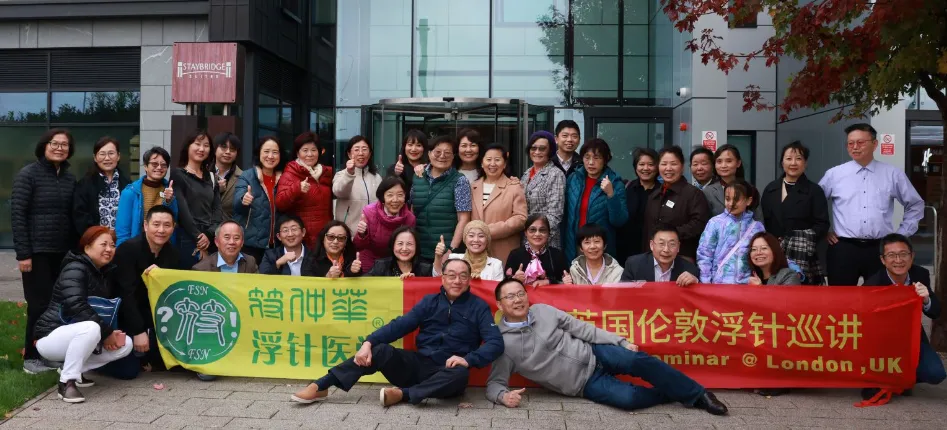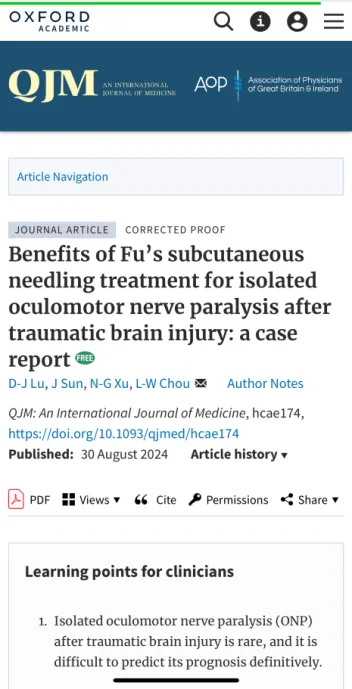Introduce a new acupuncture technique-Fu’s Subcutaneous needling
Bin Cai Ph.D., L.Ac RN
FUS SUBCUTANEOUS NEEDLING ASSOCIATION NEW YORK
In China, Fu’s subcutaneous needling (FSN) is a combination of eastern and western medicines, with elements of traditional Chinese acupuncture. A therapeutic strategy originated from ancient acupuncture and developed since 1996 (Chen, 2013, p. 193). It is a therapeutic approach for localized diseases, especially for musculoskeletal painful disorders. This technique is performed by inserting a special trocar needle into the subcutaneous layer on the target muscle. It has a curative effect in treating pain, with a hypothesized mechanism of action of finding and releasing pathological tight muscle that causes pain, which consequently relieves tissue spasm and ischemia. FSN is differentiated from traditional acupuncture and other alternatives in terms of manipulation and effects. The selection of FSN points mainly depends on the different relevant muscles or situations of the disorders (Zhonghua Fu, 2013). Different from dry needling and traditional acupuncture “Ashi” technique, FSN needle inserts into non-diseased areas. Not like acupuncture needles, FSN needs a longer retention time, often lasting more than one hour. The patient should be allowed to move or exercising in a mild way with the FSN needles retained in the subcutaneous layer (Zhonghua Fu, 2013).
There is one unique feature of FSN which is its special stimulation method-swaying movement. Like what I mentioned in the last paragraph, once the doctor inserted the FSN needle, he swayed it from side to side. Based on Zhonghua Fu’s article, this is a very critical step to FSN treatment. In most circumstances, FSN does not work well without the swaying movement especially when dealing with chronic disorders. The longer stimulation, the better clinic outcome will be. Another significant step in FSN treatment is called Reperfusion approach which refers to the mechanical methods that extend/contract repetitively the relevant muscles to improve the local circulation in non-inflamed ischemic tissues, especially in injured musculoskeletal tissue (Chen, 2013, p. 193). In terms of characteristics of effectiveness, although FSN focuses on treating musculoskeletal painful problems, it can also have positive effects on some non-painful disorders, such as numbness, chronic cough without sputum, and acute onset of asthma. The adverse effect of FSN included such as minor hemorrhage, dizziness, and fainting. However, FSN is safer than acupuncture because its needles do not go deeply and do not touch focal diseases.




References
Fu, Z., & Shepherd, R. (2013, March 6). Fu’s subcutaneous needling, a modern style of ancient acupuncture? IntechOpen. https://www.intechopen.com/chapters/43314
Chen, L. L., & Cheng, T. O. (2013, p. 193). Acupuncture in modern medicine. Rijeka, Croatia: InTech.








Leave a Reply